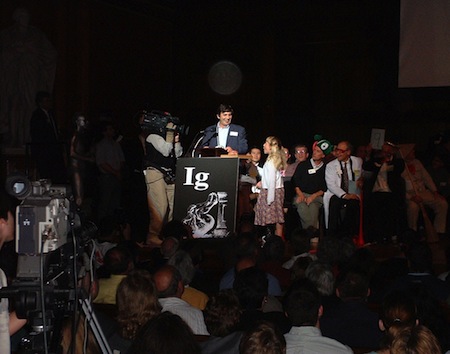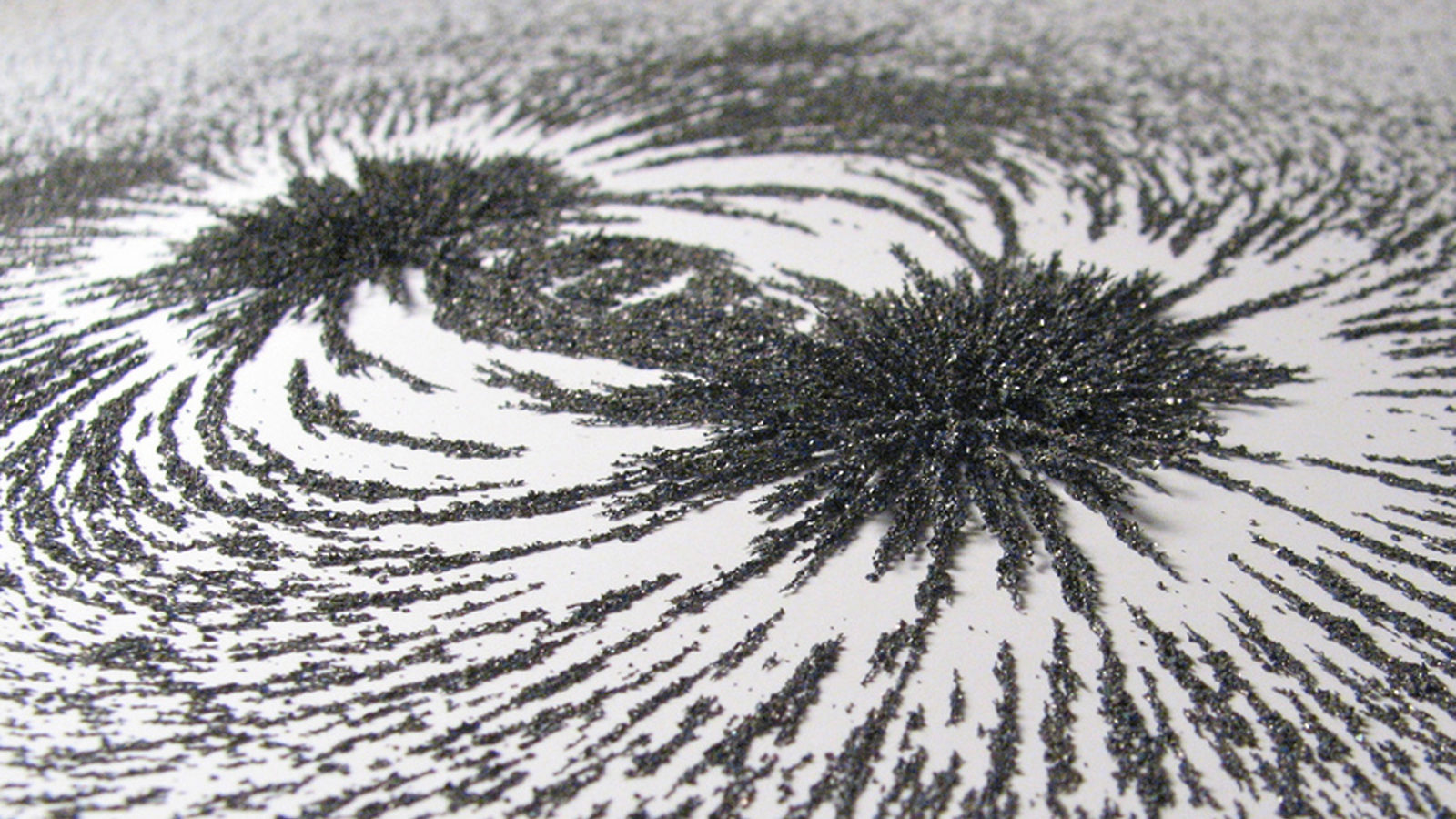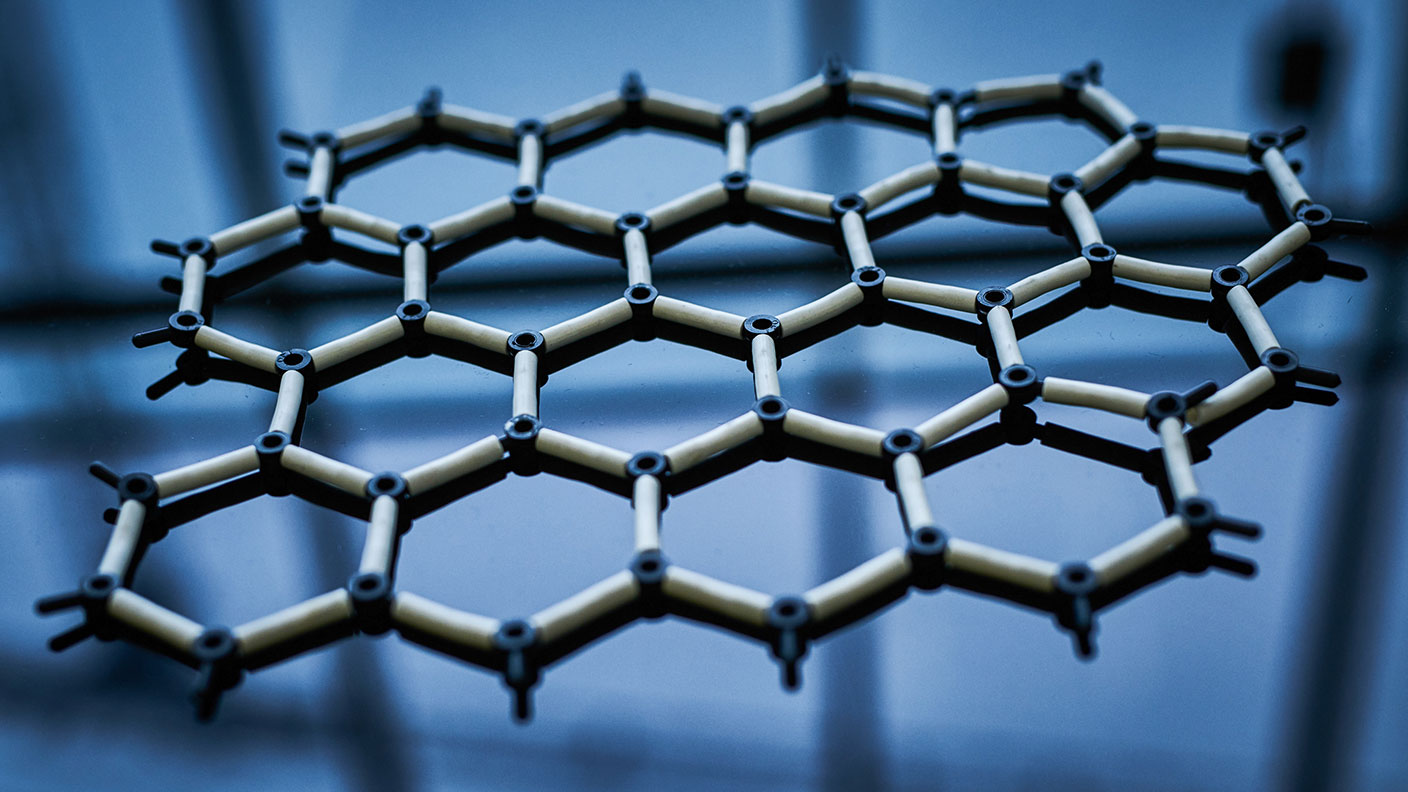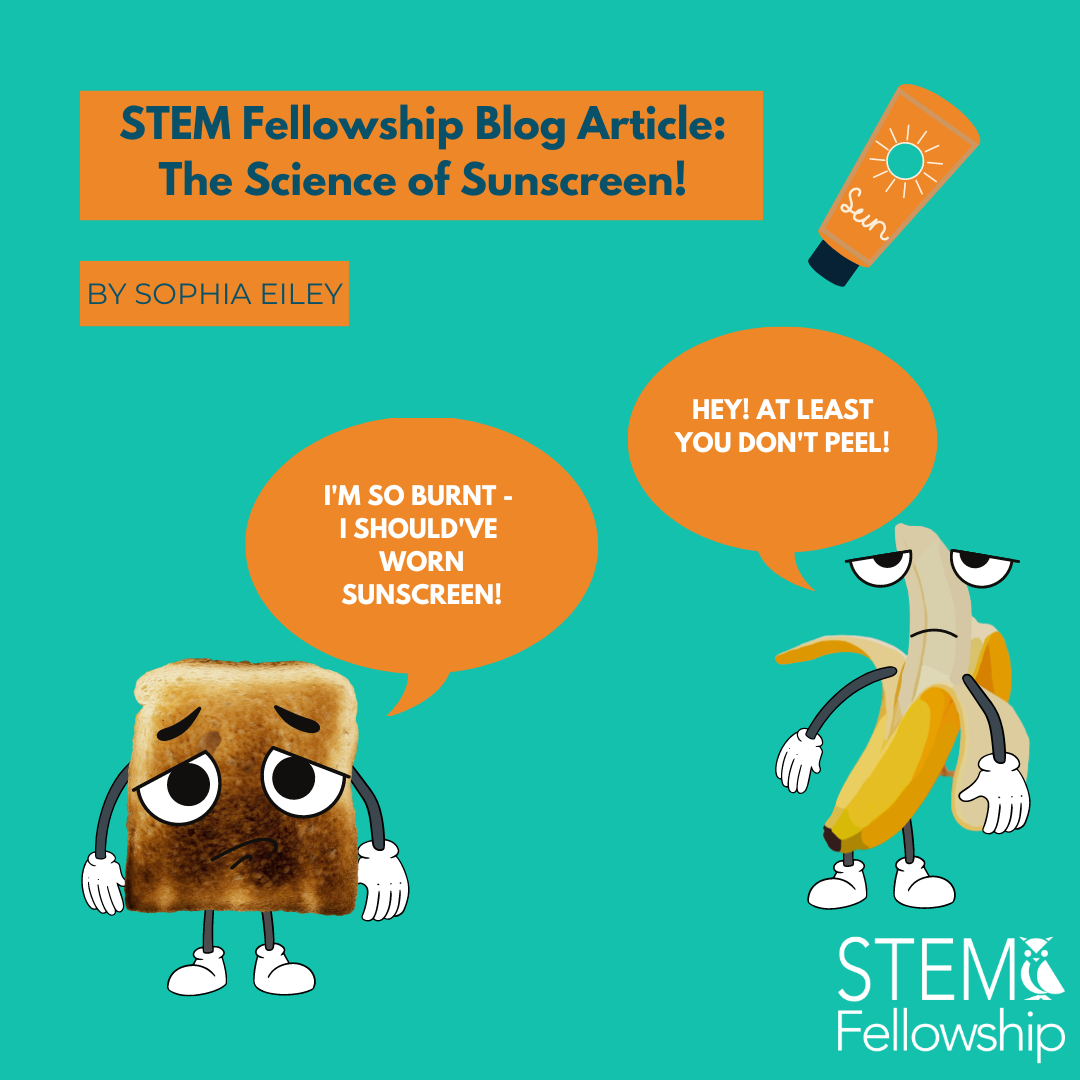By Angela Zhu
Hello everyone! Welcome to part two of the Ig Nobel Series! The winner to be introduced this time won the 2000 Ig Nobel Prize, and a decade later, he was honored as the real Nobel Prize winner for his research on graphene. What made him “the lucky one”? Let’s find out!
Andre Geim
Andre Geim was awarded the Ig Nobel in Physics for successfully levitating a frog with magnets. He remembered that as a student, he had always been curious about magnetism. One evening, while he was working at Radboud University Nijmegen’s High Field Magnet Laboratory in the Netherlands, he set an electromagnet to its maximum power and then poured some water into the machine. He admitted that it was an unprofessional move, but he immediately discovered a fascinating phenomenon: the descending water formed balls in the vertical bore and started floating! He concluded that perhaps, a “feeble magnetic response of water” could act against the Earth’s gravity.
Everything is Magnetic
Theoretically, every living creature and every object on Earth can be levitated magnetically. The reason why people think that some materials are non-magnetic is that their molecular magnetism is very weak, and therefore goes unnoticed. Scientists have given an adjective to these objects: they are “diamagnetic”, and they can all be levitated by stronger magnets. This is the concept that Geim firstly (or accidentally…) used to levitate water balls.
Show the World a Flying Frog
How can a frog be levitated by diamagnetism? Let’s first dive into the essence of matter in the universe. From science class, we know that all matter consists of atoms – the smallest particle of an element. An atom includes a nucleus and moving electrons orbiting the nucleus. When an atom is placed in a magnetic field, its electrons change their direction of motion in the opposite direction, thus creating a magnetic field. A frog, without surprise, is also made of atoms. The electrons in its body will react in the same way as described before when placed in a magnetic field. This makes it so that the frog can be seen as a group of tiny magnets meeting a large magnet with an opposite pole, thus repelling each other and generating a diamagnetic force which is directed upwards. This force could act directly against the gravitational force, making the frog float in the air with an impression of flying inside a spacecraft.

Frogs to Graphene
Chemical structure of graphene
While the accomplishment of magnetically levitating a frog won the 2000 Ig Nobel Prize in Physics for Andre Geim, he did not cease making discoveries in the scientific field. In 2004, Geim published a paper entitled “Electric field effect in atomically thin carbon films” in Science magazine, announcing the discovery of graphene, a new material that is far thinner than paper (only one atom thick), stronger than diamonds, and more conductive than copper. With a lot of patience, Geim succeeded in isolating this material from a block of graphite, a common mineral made of carbon. The news stormed through the physics world, and in 2010 Geim won the real Nobel Prize, making him the first person to have won both the Ig Nobel and the Nobel Prize. His experiment with frogs did not directly lead to the discovery of graphene, but rather intrigued Geim to continue exploring novel areas of science.
Significance of Graphene

As the world’s thinnest material, graphene is very useful in battery and supercapacitor manufacturing. Graphene is merely a 2D sheet of carbon atoms aligned in a honeycomb structure, but it demonstrates some useful properties of different materials, such as flexibility, transparency, conductivity, etc. It is widely used in the manufacturing process of high-capacity batteries, efficient solar panels, computers and sensors; scientists are also making efforts to introduce graphene into the field of medical equipment and aerospace. It is indeed a wonder material with great potential in the future technological world.
That’s the end of the second part of our Ig Nobel Series! Hope you enjoy it, and see you next time!
Works Cited
- “October 22, 2004: Discovery of Graphene.” American Physical Society, https://www.aps.org/publications/apsnews/200910/physicshistory.cfm.
- “Diamagnetic Levitation.” High Field Magnet Laboratory (HFML), https://www.ru.nl/hfml/research/levitation-explained/diamagnetic-levitation/.
- Lewis, Sarah. “How One Irreverent Physicist Went from Levitating Frogs to Winning The Nobel Prize.” Slate Magazine, Slate, 21 May 2014, https://slate.com/business/2014/05/nobel-prize-in-physics-andre-geim-went-from-levitating-frogs-to-sciences-highest-honor.html.
- “Graphene Applications: What Is Graphene Used for?” Graphene, https://www.graphene-info.com/graphene-applications#:~:text=Graphene%20has%20a%20lot%20of,%2C%20drug%20delivery%2C%20and%20more.
Images
- https://improbable.com/2010/10/05/geim-becomes-first-nobel-ig-nobel-winner/
- https://en.wikipedia.org/wiki/Ig_Nobel_Prize
- https://www.symmetrymagazine.org/article/july-2013/real-talk-everything-is-made-of-fields
- https://moneyweek.com/investments/stocks-and-shares/tech-stocks/600890/graphene-the-miracle-material-that-will-change-the
- https://www.compositesworld.com/articles/graphene-101-forms-properties-and-applications
[/et_pb_text][/et_pb_column][/et_pb_row][et_pb_row _builder_version=”4.14.4″ _module_preset=”default” column_structure=”1_3,2_3″][et_pb_column _builder_version=”4.14.4″ _module_preset=”default” type=”1_3″][/et_pb_column][et_pb_column _builder_version=”4.14.4″ _module_preset=”default” type=”2_3″][et_pb_text _builder_version=”4.14.4″ _module_preset=”default” hover_enabled=”0″ sticky_enabled=”0″]
Angela is a Grade 11 student at The Study in Westmount, Quebec. I love Engineering, Math and Biology, and I am fascinated by how these subjects can be connected together. I like exploring and learning new STEM concepts, and reading the latest STEM news! In my spare time, I enjoy playing tennis, skiing, reading and watching anime!
[/et_pb_text][/et_pb_column][/et_pb_row][/et_pb_section]








